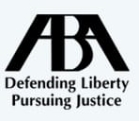As a worker, one of the biggest protections you should expect from an employer is a suitable, safe work environment. Regardless of the industry, having a safe space to work is crucial for you and your coworkers. Proper safety protocols, accurate reporting of injuries, and overall communications about different injuries make your workplace safe. Having an employer that upholds these standards can keep you and your coworkers safe from injury. Unfortunately, in some instances, crucial safety measures can get overlooked by employers, increasing the likelihood of workplace injuries and creating an unsafe work environment. For workers in the San Diego area looking for workplace accident-related legal advice, our San Diego Unsafe Work Environment Attorney at Mitchell Law Corporation are here to help.

Numerous factors contribute to an unsafe work environment, ranging from interactions with coworkers to physical, mechanical, and technical issues with your worksite. The Occupational Safety and Health Administration (OSHA) has created a national set of safety standards contributing to a safe environment. When these standards are ignored, accidents happen. In California specifically, Cal/OSHA standards are put into place that detail state-specific regulations regarding certain injury or illness-related measures. In some situations, lack of communication or poor on boarding techniques can lead to larger issues on the job, causing problems that affect you and your fellow workers. Some of the most common contributing factors to an unsafe workplace include:
Although all of these issues are very common in the workplace, addressing these problems and ensuring that they are properly handled by your employer is the first step toward improving your workplace. Depending on how your employer remedies any of these issues, if they choose to do so, the safety standards upheld by your work environment may change. If left unaddressed, any safety concerns that have the likelihood to cause workplace accidents will most likely produce injuries. Your employer holds the power in deciding whether your workplace will be safe, and their choice to act on that power can either create a safe or unsafe working environment.
Any of the above-mentioned factors can decrease the level of safety in a work environment, making the risk of workplace injuries increase as a result. For example, if you work at a coffee shop and know that one of your espresso machines does not have a functioning steam wand, that piece of broken machinery is bound to cause injuries like burns or scalds if not repaired. Similarly, any cracks in the floor, improperly labeled and stored chemicals, or lack of training regarding how to properly lift inventory can lead to injuries, and if left unaddressed, these factors can contribute to an unsafe work environment.
Throughout all job fields, injuries and accidents faced by employees are relatively similar across the board, and similar injuries can be found in various work-related injury cases. Specific jobs have a higher likelihood of causing injuries due in part to the use of certain machines or equipment to perform different tasks; however, workplace injuries can happen in any role or position, regardless of field. Looking out for these specific injuries, as well as knowing what needs to be addressed in your workplace to limit these injuries, is crucial for creating a safe working environment. Some of the more common types of workplace injuries faced by workers are:
Common injuries in the workplace can all be traced back to one source: an unsafe work environment. Without the proper maintenance, safety regulations, training, and signage, your workplace can go from safe to dangerous very quickly. Your employer must uphold Cal/OSHA and Federal OSHA safety standards, providing you and your coworkers with the comfort of knowing your workplace is properly maintained and helping you avoid any major accidents or injuries on the job. If not addressed or upheld, your employer may face legal actions regarding their negligence, as well as their inability to run a safe, accident-free business.
Although OSHA is a federal organization contained under the United States Department of Labor, California has a separate provisional list of laws that outline state-specific, work-related safety regulations that go beyond national OSHA standards. One of the biggest differences between Cal/OSHA and Federal OSHA comes down to the inclusion of the Injury and Illness Prevention Standard, which requires employers to have a complete, organized list of any possible workplace hazards that can affect employees or cause an injury, and the Injury and Illness Prevention Program (IIPP). If this document is not available upon request, business owners and employers can be cited as violating Cal/OSHA guidelines.
Cal/OSHA guidelines also have specific provisions concerning different motions and injuries that can result from certain positions. The Repetitive Motion Injury (RMI) prevention program is put into place to provide evaluations of different worksites to instate injury-reduction training and modified facilities operations standards to limit any non-ergonomic motions employees do at work.
Similar harm reduction training surrounding exposure and disposal of sharps and sharps containers is also outlined in Cal/OSHA guidelines, unlike federal standards. In terms of disease-related standards, Cal/OSHA has stricter regulations concerning Aerosol Transmissible Disease (ATD) reduction, helping limit the spread of SARS, Tuberculosis, Measles, and Influenza, among other pathogens. Cal/OSHA guidelines function similarly to federally enforced OSHA guidelines but with more focus on common, state-specific issues.
Depending on the nature of the injury, as well as how you sustained your injury, you may be able to take legal action to rectify your claim in San Diego. If you are considered an employee of a particular business, you may only be able to file for worker’s compensation; however, if you are hired as an independent contractor and get hurt on the job, suing the company that contracted your services may be the main avenue for settling your case. For example, if you work as a plumber and are hired to fix some leaking pipes at a restaurant, but you end up falling and spraining your ankle on a broken floor tile, you may have to file a claim against the owner of the restaurant as a way to repay the damages caused by that sprain. On the other hand, if you are hired as an employee of that restaurant, either as a chef or waitstaff, and sustain the same injury, you must report that injury to your boss to be handled as a worker’s compensation case.
If the damage caused by your workplace accident goes beyond the scope of your employer’s coverage, you have the option of filing a claim against them as a way to gain back any further damages. For example, if you sustain a back injury on the job and report the injury to your supervisor, but your employer only covers a certain portion of your medical expenses related to treating that injury, especially considering that this is a violation of regulations surrounding worker’s compensation guidelines, you can file a claim for damages. Creating a personal injury suit surrounding your work-related injury can help recover money lost from missing shifts, loss of earning capacity, and even pain and suffering relating to your condition.
Sustaining an injury, especially a severe injury that keeps you out of work, is a stressful, hard-to-manage ordeal that is taxing physically and emotionally. The safety of your workplace, including your employer’s response to any reports about safety regulations that need to be addressed, is the ultimate determining factor for whether or not you may suffer any workplace-related injury. If you find yourself seeking a San Diego Unsafe Work Environment Attorney, look no further than the legal team at Mitchell Law Corporation. For more information regarding our practice areas, locations, and team, visit our website and contact us for a consultation.







